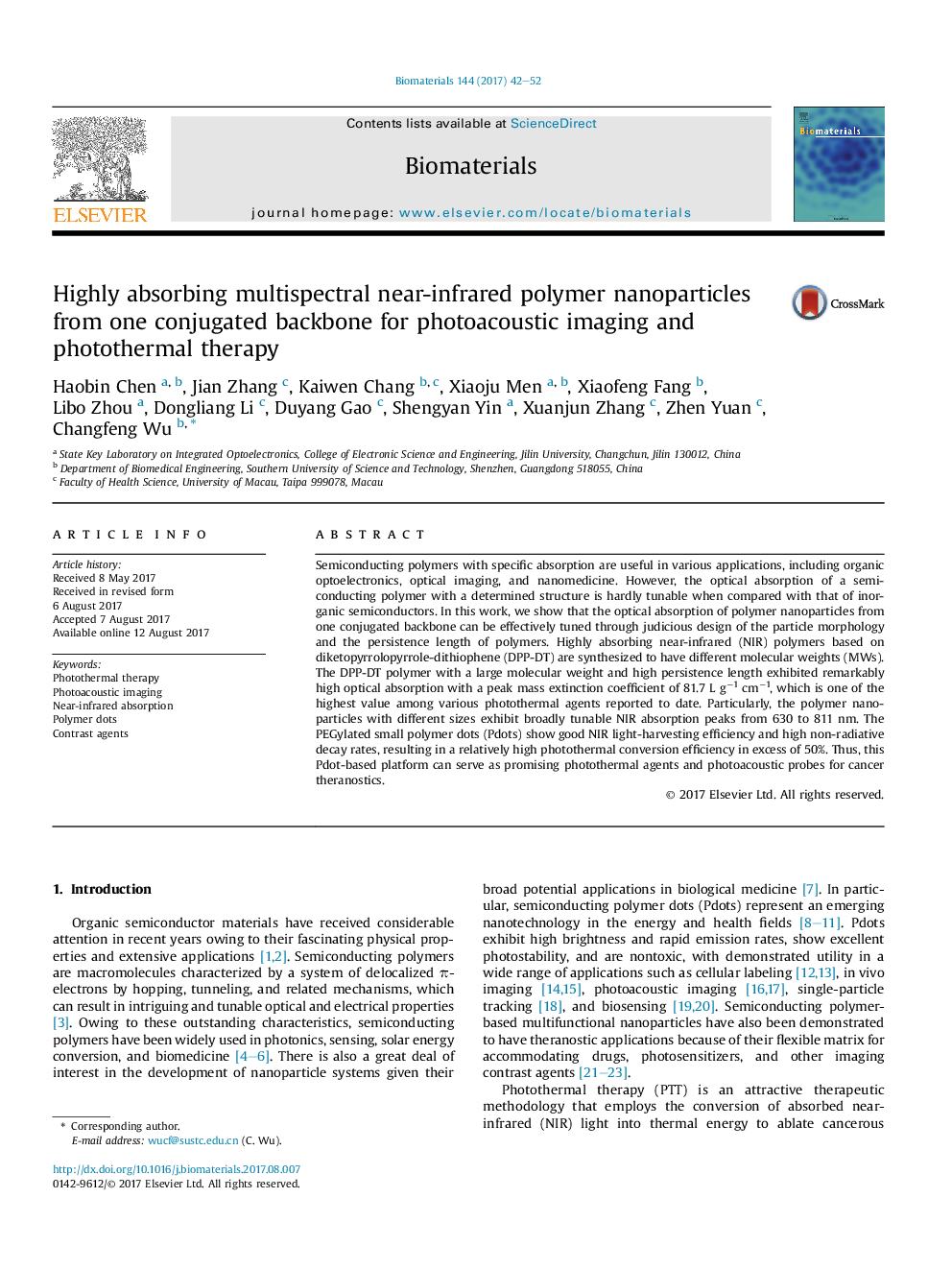| Article ID | Journal | Published Year | Pages | File Type |
|---|---|---|---|---|
| 4752250 | Biomaterials | 2017 | 11 Pages |
Semiconducting polymers with specific absorption are useful in various applications, including organic optoelectronics, optical imaging, and nanomedicine. However, the optical absorption of a semiconducting polymer with a determined structure is hardly tunable when compared with that of inorganic semiconductors. In this work, we show that the optical absorption of polymer nanoparticles from one conjugated backbone can be effectively tuned through judicious design of the particle morphology and the persistence length of polymers. Highly absorbing near-infrared (NIR) polymers based on diketopyrrolopyrrole-dithiophene (DPP-DT) are synthesized to have different molecular weights (MWs). The DPP-DT polymer with a large molecular weight and high persistence length exhibited remarkably high optical absorption with a peak mass extinction coefficient of 81.7Â LÂ gâ1Â cmâ1, which is one of the highest value among various photothermal agents reported to date. Particularly, the polymer nanoparticles with different sizes exhibit broadly tunable NIR absorption peaks from 630 to 811Â nm. The PEGylated small polymer dots (Pdots) show good NIR light-harvesting efficiency and high non-radiative decay rates, resulting in a relatively high photothermal conversion efficiency in excess of 50%. Thus, this Pdot-based platform can serve as promising photothermal agents and photoacoustic probes for cancer theranostics.
Graphical abstractDownload high-res image (383KB)Download full-size image
